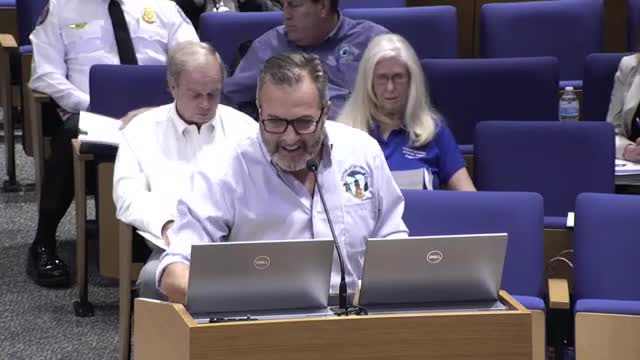Inlet Shoaling Crisis Threatens Navigation Safety
August 08, 2024 | Jupiter, Palm Beach County, Florida
This article was created by AI summarizing key points discussed. AI makes mistakes, so for full details and context, please refer to the video of the full meeting. Please report any errors so we can fix them. Report an error »

In a recent government meeting, officials discussed significant challenges related to increasing shoaling and sediment management at the Jupiter Inlet. Over the past three years, dredging operations have seen a dramatic rise in the volume of sand collected, escalating from 27,000 cubic yards in 2019 to 128,000 cubic yards last year. This trend has raised concerns among local authorities and stakeholders about navigation safety and the overall health of the shoreline.
The meeting highlighted the ongoing collaboration with state agencies to monitor and study the influx of sand into the inlet's trap, which has been described as more robust than ever. Officials noted that the shoaling has made navigation increasingly difficult, with some vessels struggling to maneuver safely due to the shallow waters. Local residents and commercial captains expressed their frustrations, with one noting that the current conditions are the worst they have seen in 37 years of experience.
The discussion also touched on the historical context of the inlet, referencing an aerial image from 1945, the last time the inlet was closed. This underscores the importance of continuous management efforts to maintain both the inlet's navigability and the stability of the surrounding shoreline.
Concerns were raised about the potential for increased hazards due to the shoaling, with suggestions for the Coast Guard to consider placing day markers to aid navigation. However, officials explained that the Jupiter Inlet is classified as a non-navigable inlet, complicating the implementation of such measures.
As the meeting concluded, participants expressed gratitude for the diligent work being done to manage the inlet and its surrounding areas, emphasizing the critical role this work plays in ensuring safe passage for vessels and protecting the local environment. The ongoing study and monitoring efforts will be crucial in addressing the challenges posed by the increasing sediment volumes and ensuring the safety of the waterway for all users.
The meeting highlighted the ongoing collaboration with state agencies to monitor and study the influx of sand into the inlet's trap, which has been described as more robust than ever. Officials noted that the shoaling has made navigation increasingly difficult, with some vessels struggling to maneuver safely due to the shallow waters. Local residents and commercial captains expressed their frustrations, with one noting that the current conditions are the worst they have seen in 37 years of experience.
The discussion also touched on the historical context of the inlet, referencing an aerial image from 1945, the last time the inlet was closed. This underscores the importance of continuous management efforts to maintain both the inlet's navigability and the stability of the surrounding shoreline.
Concerns were raised about the potential for increased hazards due to the shoaling, with suggestions for the Coast Guard to consider placing day markers to aid navigation. However, officials explained that the Jupiter Inlet is classified as a non-navigable inlet, complicating the implementation of such measures.
As the meeting concluded, participants expressed gratitude for the diligent work being done to manage the inlet and its surrounding areas, emphasizing the critical role this work plays in ensuring safe passage for vessels and protecting the local environment. The ongoing study and monitoring efforts will be crucial in addressing the challenges posed by the increasing sediment volumes and ensuring the safety of the waterway for all users.
View full meeting
This article is based on a recent meeting—watch the full video and explore the complete transcript for deeper insights into the discussion.
View full meeting